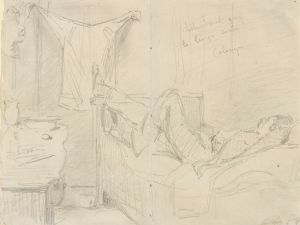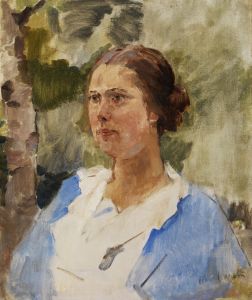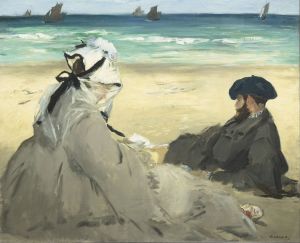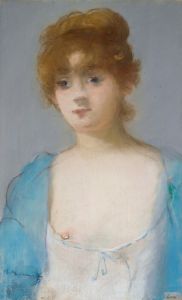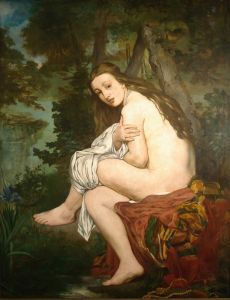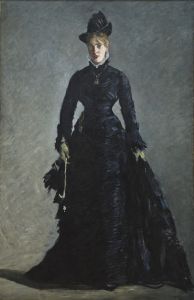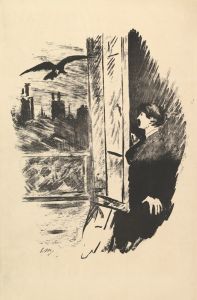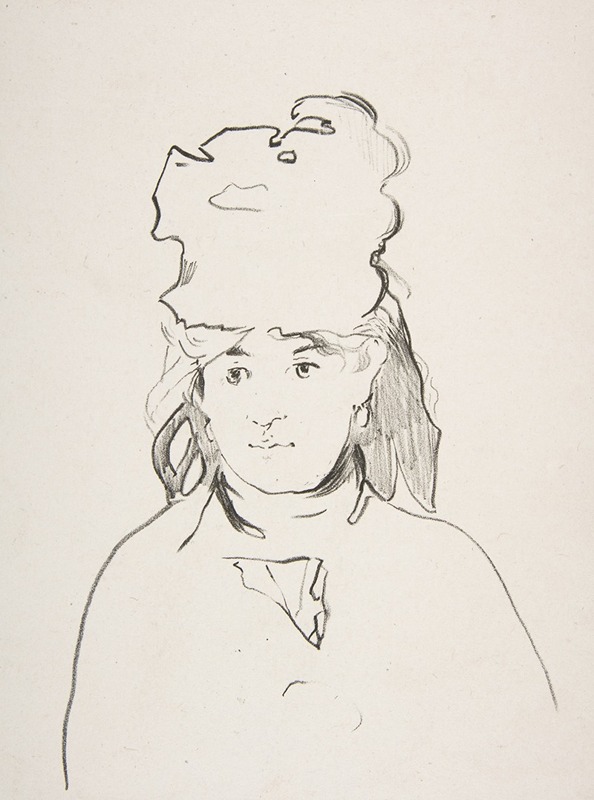
Berthe Morisot
A hand-painted replica of Édouard Manet’s masterpiece Berthe Morisot, meticulously crafted by professional artists to capture the true essence of the original. Each piece is created with museum-quality canvas and rare mineral pigments, carefully painted by experienced artists with delicate brushstrokes and rich, layered colors to perfectly recreate the texture of the original artwork. Unlike machine-printed reproductions, this hand-painted version brings the painting to life, infused with the artist’s emotions and skill in every stroke. Whether for personal collection or home decoration, it instantly elevates the artistic atmosphere of any space.
Édouard Manet's painting "Berthe Morisot with a Bouquet of Violets" is a notable work that captures the likeness of Berthe Morisot, a prominent figure in the Impressionist movement. Painted in 1872, this portrait is a testament to the close professional and personal relationship between Manet and Morisot, both of whom were influential artists in 19th-century France.
Berthe Morisot was not only a frequent subject of Manet's paintings but also a distinguished painter in her own right. She was one of the few women who were part of the Impressionist circle, and her work was exhibited in seven of the eight Impressionist exhibitions held between 1874 and 1886. Morisot's style was characterized by its lightness, fluidity, and the use of vibrant colors, often depicting domestic life and intimate scenes.
In "Berthe Morisot with a Bouquet of Violets," Manet portrays Morisot seated and dressed in a black dress, which contrasts sharply with her pale complexion. The black attire is thought to reflect the mourning customs of the time, as Morisot's father had passed away shortly before the painting was completed. The bouquet of violets she holds adds a touch of color and symbolism, as violets were often associated with modesty and fidelity.
Manet's technique in this portrait is notable for its loose brushwork and the subtle interplay of light and shadow, which are hallmarks of his style. The painting's composition is intimate, focusing closely on Morisot's face and upper body, capturing her thoughtful expression and the delicate textures of her clothing and the flowers. The background is rendered in soft, muted tones, which serves to highlight Morisot's figure and the vividness of the violets.
The relationship between Manet and Morisot was one of mutual respect and admiration. Morisot was introduced to Manet in 1868, and they quickly developed a friendship that would last until Manet's death in 1883. Morisot's influence on Manet is evident in his later works, where he adopted some of the lighter palette and softer brushstrokes characteristic of the Impressionists. Conversely, Manet's encouragement and support were instrumental in Morisot's development as an artist.
"Berthe Morisot with a Bouquet of Violets" is housed in the Musée d'Orsay in Paris, where it remains an important piece in the collection of 19th-century art. The painting is celebrated not only for its artistic merit but also for its representation of the significant role women played in the Impressionist movement, a role that was often overshadowed by their male counterparts.
This portrait is a reflection of the dynamic and evolving art scene in Paris during the late 19th century, where traditional boundaries were being challenged, and new forms of expression were emerging. Manet's portrayal of Morisot captures not just the likeness of a fellow artist but also the spirit of an era that was marked by innovation and change in the world of art.








